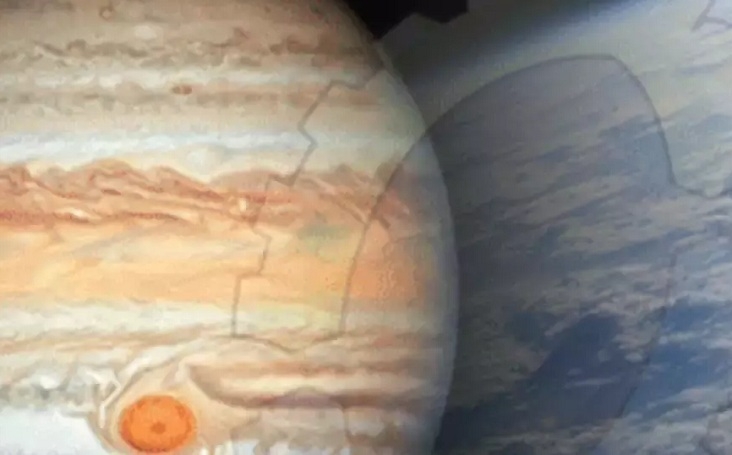Hubble finds water vapour on Jupiter Moon
| Date :28-Jul-2021 |

WASHINGTON ;
ASTRONOMERS have, for the first time, uncovered evidence of water vapour in the atmosphere of Jupiter’s moon Ganymede using NASA’s Hubble Space Telescope. This water vapour forms when ice from the moon’s surface sublimates -- that is, turns from solid to gas. The findings are published in the journal Nature Astronomy. Previous research has offered circumstantial evidence that Ganymede, the largest moon in the solar system, contains more water than all of Earth’s oceans. However, temperatures there are so cold that water on the surface is frozen solid. Ganymede’s ocean would reside roughly 100 miles below the crust; therefore, the water vapour would not represent the evaporation of this ocean.
To find this evidence of water vapour, astronomers re-examined Hubble observations from the last two decades. The team, led by Lorenz Roth of the KTH Royal Institute of Technology in Stockholm, Sweden, analysed combined data from two instruments: Hubble’s Cosmic Origins Spectrograph in 2018 and archival images from the Space Telescope Imaging Spectrograph (STIS) from 1998 to 2010.
They discovered there was hardly any atomic oxygen in Ganymede’s atmosphere. Ganymede’s surface temperature varies strongly throughout the day, and around noon near the equator it may become sufficiently warm that the ice surface releases (or sublimates) some small amounts of water molecules. “So far only the molecular oxygen had been observed,” explained Roth. “This is produced when charged particles erode the ice surface. The water vapour that we measured now originates from ice sublimation caused by the thermal escape of water vapour from warm icy regions,” Roth added.